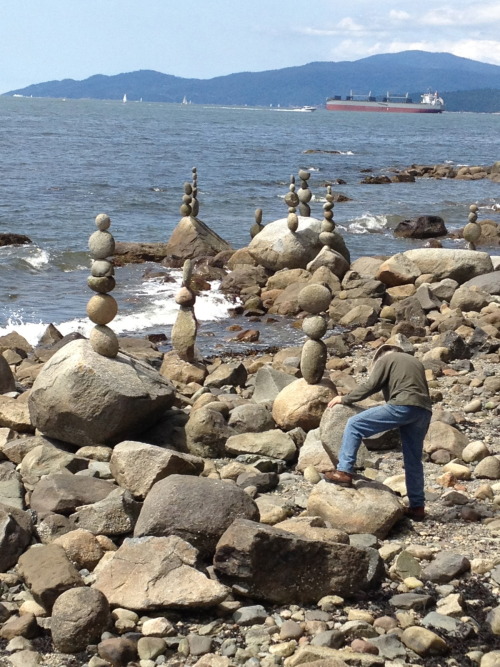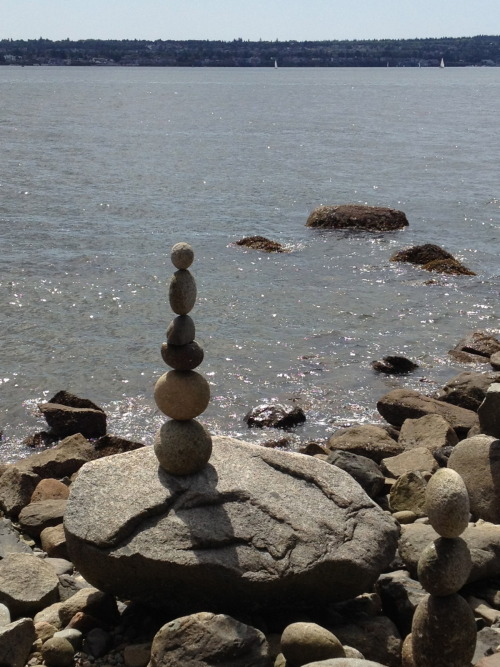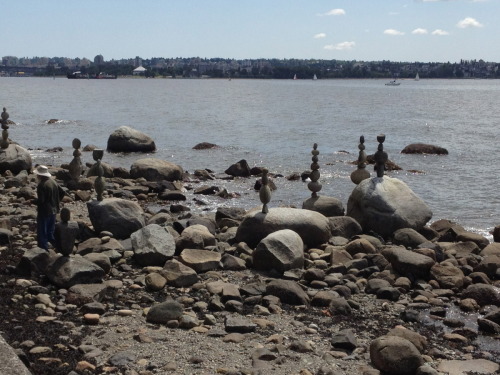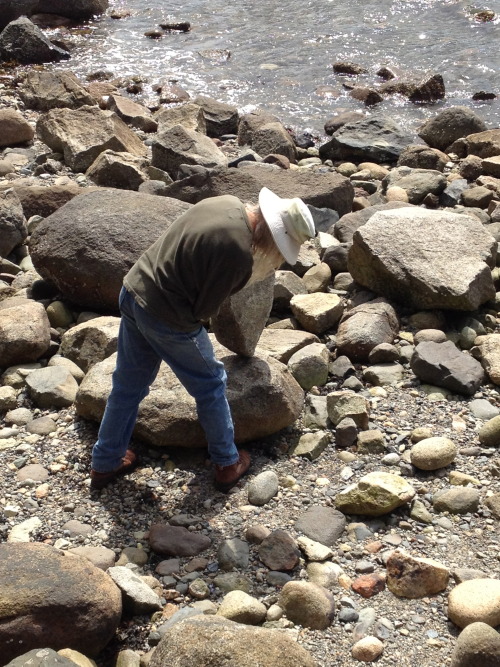The Question of Balance
 Tuesday, August 7, 2012 at 4:12PM
Tuesday, August 7, 2012 at 4:12PM
The month of July was filled with traveling but empty of blog posts on my website. This perturbed me at first, but I have had to remind myself that as in all areas of life, even in the world of blogging, balance is important.
Too many posts can overwhelm the reader and too few can make them lose interest. The blogger has to find the right balance, and even then there are times when circumstances are such that no posts are in order too.
Two weeks of July were spent in South Africa and two in Canada. It was during my last weekend in Canada and whilst visiting Vancouver that the message of balance was clearly delivered to me yet again.
Walking through Stanley Park along the sea wall, we were suddenly confronted by a wonderful scene as we turned a corner. Stone sculptures set against a backdrop of water, formed a magnificent picture of beauty, stillness and balance.
The balanced stones appeared to defy gravity and filled me with awe. They seemed to whisper a tale of centredness and groundedness in the present moment, but at the same time the aura of stillness around them seemed to connect to other times and other places.
They were set in the nunc fluens, the Latin for “the flowing now”, the ongoing moments of time, but spoke of the nunc stans, the abiding now, a dimension beyond linear time where distinctions between past, present and future fall away.
Nearby a man was moving stones around and on the seawall was a guest book and prints of photos of the sculptures. Fascinated by the scene, that evening I googled “temporary balanced stones”, words I had seen written on something as we passed by.
The man is Kent Avery and he has been coming to this spot for 12 years to practice the art of stone balancing. Particulary amazing is that he comes back every week, as tides and wind ensure that the sculptures are not permanent. Kent Avery says of his art that it “really seems to bring something out in people. Many echo the yearning to be more balanced in their own lives.”
The sculptures take anything from five minutes to half an hour to complete and the whole process is done by feel.
Many of us are caught up in habits and rigid ways of doing things. The sculptures are a reminder that balance is found by being in tune with each moment as it arises. Balance requires openness to what is before us. What worked yesterday will not necessarily work today or in the future. What works for one child will not necessarily work for another. The way a task is completed at work is not a guarantee that the same principles can be applied to the next project at hand.
Balance holds the hand of mindfulness.
“Mindfulness means paying attention in a particular way; on purpose, in the present moment, and nonjudgmentally.” Jon Kabat-Zinn.
Balance helps to establish a path of moderation, and therefore a path of wisdom.
Please take the time to watch this video of Kent Avery’s art:
Balance is not only a personal but also a collective struggle in a world crying out for love and compassion. If you wish you can also listen to “Balance” by The Moody Blues. The track is from their album “A Question of Balance”.
Related posts:
Mindfulness and Balance, posted exactly a year ago today. (Interesting!)



